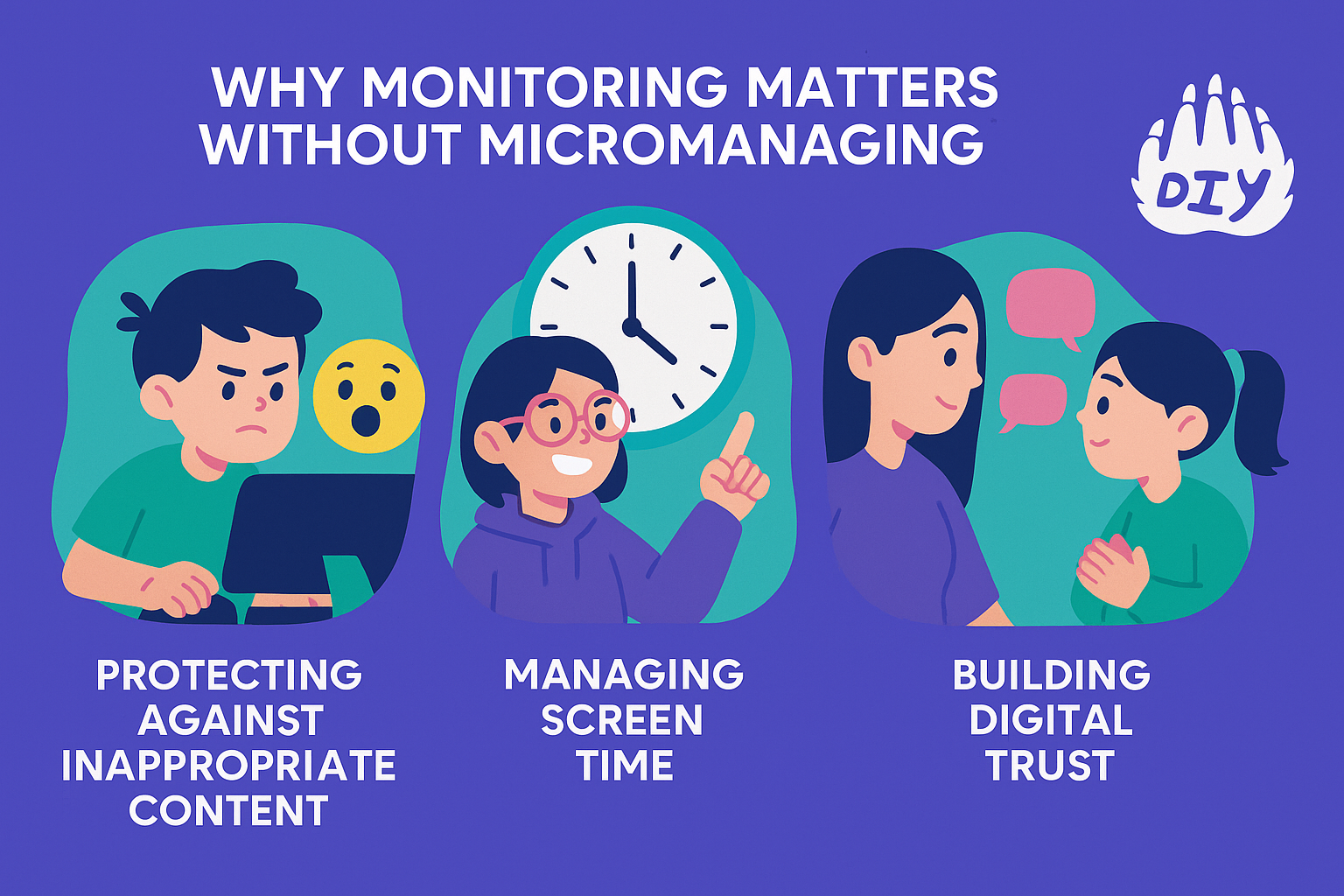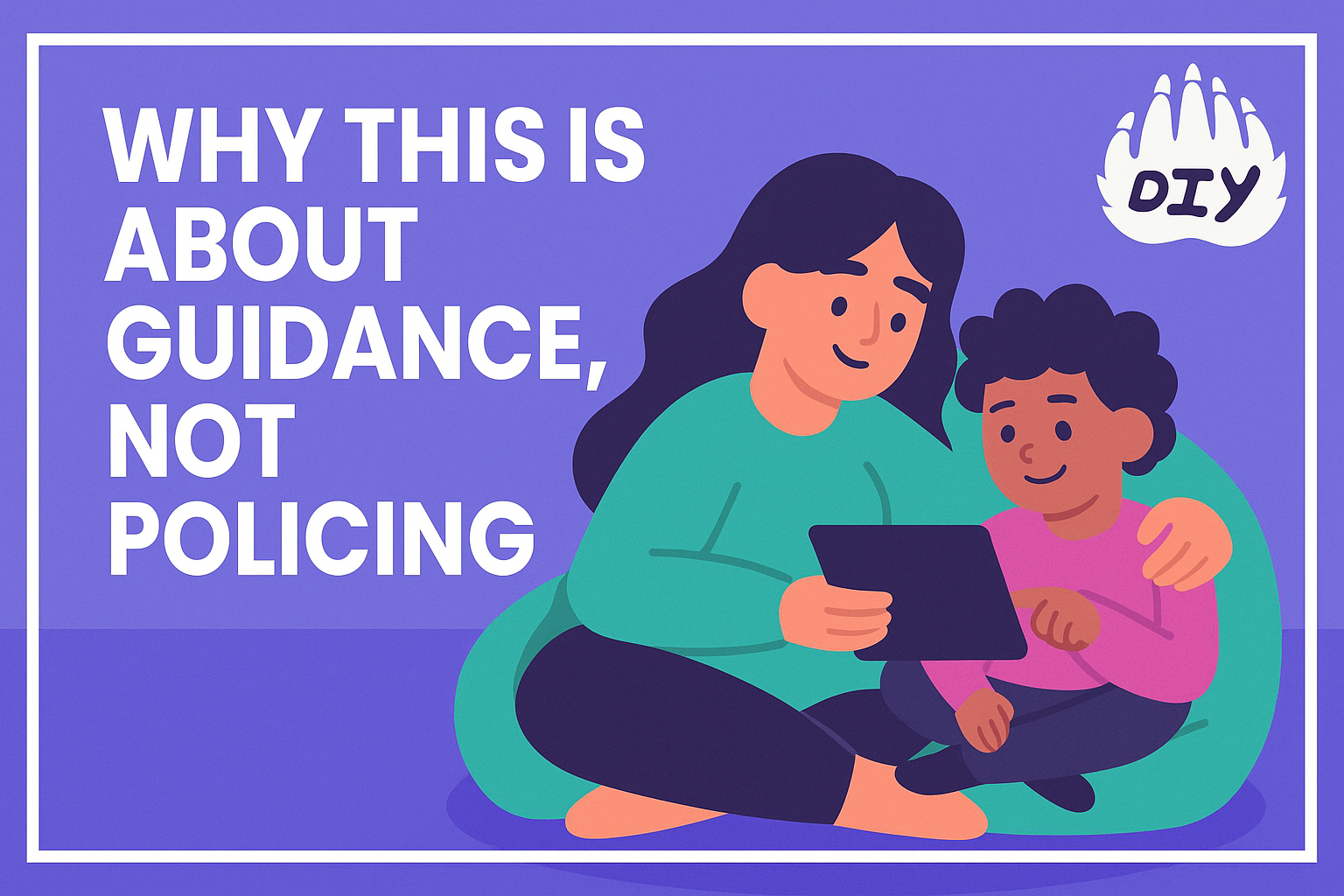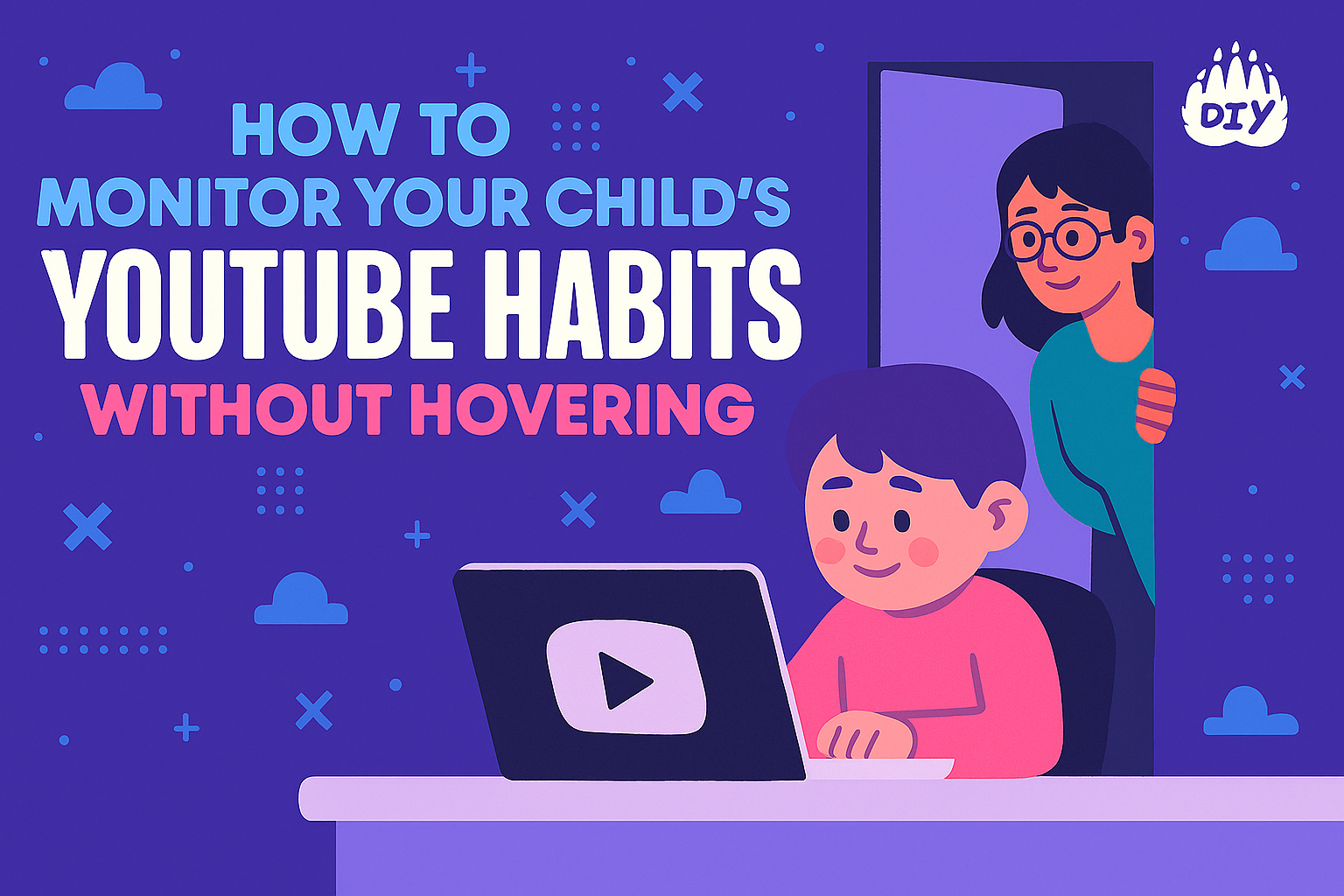11th August 2025
How to Monitor Your Child’s YouTube Habits Without Hovering
Smart, respectful ways to monitor your child’s YouTube viewing without hovering. Learn tools, tips, and trust-building strategies for safer streaming.
DIY Team
YouTube has become a daily staple for kids whether they’re learning how to draw, watching science experiments, or following their favorite gaming channels. The platform can be an incredible tool for creativity and learning, but it’s also vast, unpredictable, and not always age-appropriate.
For many parents, the challenge is finding a middle ground between keeping kids safe and giving them independence. You don’t want to hover over their shoulder every minute, but you also don’t want to be in the dark about what they’re watching.
The good news? You can monitor their YouTube habits in ways that feel natural, non-intrusive, and even relationship-building.

Why Monitoring Matters Without Micromanaging
When parents think of “monitoring,” they sometimes picture strict controls or constant surveillance. But in reality, the goal isn’t to police, it's to guide. Here’s why it’s important:
1. Protecting Against Inappropriate Content
YouTube is algorithm-driven, which means it recommends videos based on what’s been watched before. Sometimes, this works well. Your child watches one volcano experiment and gets more science videos. But sometimes, the algorithm leads them to content with mature themes, misinformation, or clickbait.
2. Managing Screen Time
Kids can easily lose track of time online. Knowing what they watch (and how much) can help you guide them toward a healthy balance between screen activities and other hobbies.
3. Building Digital Trust
Children who feel respected in their online autonomy are more likely to be open about their interests and concerns. The less they feel “watched,” the more likely they’ll be to voluntarily share what they’ve seen.
YouTube’s Built-In Parental Controls
Before looking at outside tools, it’s worth understanding what YouTube already offers.
YouTube Kids
Designed for younger viewers, YouTube Kids features curated content, stronger filters, and easy parental settings. It’s not perfect, but it’s a safer starting point for early elementary ages.
Restricted Mode
On the main YouTube app, turning on Restricted Mode filters out content flagged as inappropriate. This works best for older kids but should be paired with other safety steps since it’s not 100% reliable.
Supervised Accounts
If your child is ready to graduate from YouTube Kids, a supervised account lets you choose from three viewing levels (Explore, Explore More, and Most of YouTube) while still maintaining control.
Reviewing Watch History
This is the simplest, most direct way to know what your child has been watching. You can review the list alone or better yet sit down together to talk about their favorite videos.
Discreet Ways to Stay Informed
You don’t need to watch every second with them. Here are some subtle strategies:
1. Make Watch History a Conversation
Instead of using it as a “gotcha,” frame watch history reviews as a way to connect. Ask them to show you the funniest video they saw that week or the most interesting fact they learned.
2. Share Playlists
Create a playlist of videos you think they’ll like educational channels, inspiring talks, or family-friendly entertainment. This subtly shapes what YouTube recommends next without dictating their choices.
3. Use Google Family Link
This app gives you an overview of app activity, including time spent on YouTube, without requiring you to hover constantly. It’s less about control and more about awareness.
4. Make It a “Show-and-Tell” Moment
Encourage kids to present a video they’ve found to the family. This keeps them engaged in sharing and lets you see their viewing style in action.
Tools Beyond YouTube
YouTube’s controls are useful, but for extra reassurance, you can explore other options:
Parental Control Apps
Services like AstroSafe, Bark, or Net Nanny can provide content filtering, activity summaries, and even alerts for flagged terms. These are especially helpful for families with multiple devices.
Router-Level Filters
Some routers offer parental settings that apply to all connected devices. This gives you a broad layer of safety without having to configure each device individually.
Screen Time Features on Devices
iOS Screen Time and Android’s Digital Wellbeing can help you limit YouTube use by setting daily time caps or scheduled downtime.
Building Digital Trust
This might be the most important piece of the puzzle. Technology tools work best when paired with open communication.
Set Rules Together: Involve your child in deciding viewing limits and content guidelines.
Ask About Content: Show interest in what they’re watching, not just whether it’s “safe.”
Reward Openness: If they come to you about a questionable video, thank them for telling you instead of immediately punishing.
The goal is to help them develop their own judgment so they can eventually navigate YouTube without external controls.
Red Flags to Watch For
Even with safeguards, it’s important to notice when something changes:
They’re secretive about closing the app or hiding screens when you walk in.
Sudden shifts in interests or mood after using YouTube.
Recurring themes of violence, distress, or negativity in the videos they watch.
If you see these signs, it’s worth having a calm, open-ended conversation about what’s going on.
Why “Discreet” Works Best
Constant hovering often backfires. Kids may feel smothered or try to hide their activity entirely. By using light-touch monitoring, you give them room to grow, make choices, and even make small mistakes in a safe environment.
The discreet approach is about:
Transparency Letting your child know you’re involved in their online life.
Partnership Framing safety as a shared goal rather than a parental mandate.
Empowerment Teaching them skills to evaluate and choose good content themselves.

Why This Is About Guidance, Not Policing
YouTube is a huge part of modern childhood, and it’s unrealistic (and unnecessary) to cut it out entirely. The question isn’t whether you should monitor it’s how you monitor.
By blending YouTube’s built-in tools, a few extra safeguards, and genuine conversations, you can give your child the freedom to explore online while still keeping them safe.
The ultimate goal is simple: raise a savvy, confident young viewer who knows how to navigate the online world without you having to hover.
FAQs About Safely Monitoring Your Child’s YouTube Habits
Is YouTube Kids enough to keep my child safe?
It’s a good start for younger children, but some inappropriate content may still slip through. Pair it with other safety measures.
How often should I check watch history?
Weekly check-ins strike a good balance between awareness and independence.
Can I block certain channels?
Yes, on YouTube Kids, you can block specific videos or channels. On the main YouTube app, you’ll need third-party tools.
What’s the difference between Restricted Mode and a supervised account?
Restricted Mode filters some mature content, while a supervised account offers multiple viewing levels with more parental oversight.
Help Your Kids Watch YouTube Safely – Without Hovering
- Find out how to discreetly monitor your child’s YouTube activity while respecting their independence
- Learn about YouTube’s parental controls, watch history, and supervised accounts
- Discover trust-building tips that make online safety a partnership

